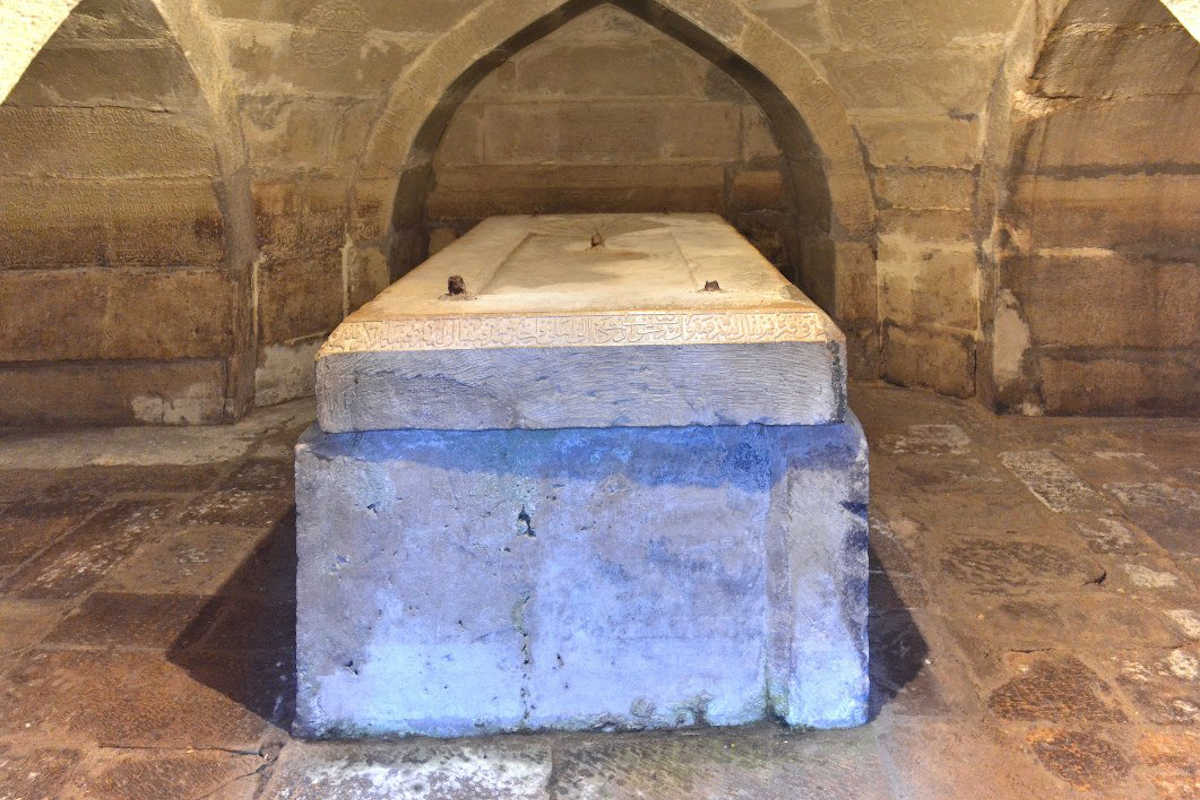Shakhrisabz - Crypt of Amir Temur

The Crypt of Amir Temur in Shakhrisabz – an unfulfilled legacy
In the heart of the historic city of Shakhrisabz, hidden behind the monumental buildings of the Dorus Saodat complex, there is a mysterious crypt which, according to scientific findings, was once intended as the burial place of Amir Temur. This architectural masterpiece of the Temurid period is unique in its design and is a fascinating testimony to medieval architecture and burial traditions.
Although Amir Temur was ultimately not buried here, but in Samarkand in the Gur-Emir Mausoleum, the crypt in Shakhrisabz remains a symbol of his power, ambitions and spiritual world. Its unique architectural style, exquisite marble panelling and deeply carved religious inscriptions make it one of the most significant archaeological discoveries in Central Asia.
A forgotten resting place – the discovery of the crypt
The crypt remained hidden for centuries. It was not until the middle of the 20th century that it was rediscovered by archaeologists. Its existence was confirmed by excavations in the area of the Dorus Saodat complex, one of the most important religious and cultural centres of the Temurid period.
First documentation (1933): The Soviet archaeologist Y. G. Gulyamov catalogued the inscriptions and the architectural features of the crypt.
Detailed studies (1942): Scientists M. E. Masson and G. A. Pugachenkova carried out a comprehensive investigation and confirmed that the crypt was intended for only one burial – a sign of the extraordinary reverence attributed to it.
These findings suggested that the crypt was originally planned as Amir Temur’s final resting place. However, fate had other plans: after his sudden death in 1405, the great conqueror was not buried in Shakhrisabz, but in Samarkand.
Unique architecture – a construction without precedent
The crypt of Amir Temur clearly stands out from other burial sites of the time. Its extraordinary design demonstrates the mastery of the Temurid architects:
Cross-shaped floor plan: The crypt has a symmetrical structure that is unrivalled in the Near and Middle East.
Solid marble façade: The walls are clad in carefully hewn white marble, a material that is a rarity for Temurid buildings.
Deeply chiselled inscriptions: The ornate calligraphy on the walls contains religious texts and praises to God, including:
- “Sovereignty belongs to Allah. Only Allah is eternal”
- “Good is in the hands of Allah and He is mighty over all things”
Monumental marble sarcophagus: In the centre of the crypt is an impressive marble sarcophagus covered with a stone slab more than ten centimetres thick.
Enigmatic steel rings: Steel rings were embedded at the corners and in the centre of the heavy marble slab, presumably to fix or lift the cover.
These features emphasise the unique character of the crypt, which has no equivalent in Central Asia in terms of its architectural design and spiritual significance.
The unused sarcophagus – Why was Amir Temur not buried here?
The legendary conqueror Amir Temur died in 1405 while on a campaign to China with his army. However, his mortal remains were not buried in Shakhrisabz, but were laid to rest in the Gur-Emir Mausoleum in Samarkand.
Why was Temur not buried in his own, specially constructed crypt? Historians cite several possible reasons:
Sudden death far from home: as Temur died unexpectedly, repatriating his body to Shakhrisabz may have been too logistically complex.
Political decision: Samarkand was the capital of his empire, and his successors may have decided to bury him there to emphasise dynastic continuity.
Spiritual aspects: Some researchers hypothesise that Samarkand was deliberately chosen as the site of his mausoleum to further strengthen the city’s sacred aura.
Regardless of the exact cause, the crypt of Shakhrisabz remains a fascinating relic reminiscent of the original burial plans for the legendary ruler.
The crypt today – a window into the past
Thanks to modern archaeological research, the crypt is now an important cultural and historical monument. Its authentic architecture, ornate inscriptions and monumental tomb make it one of the most impressive buildings of the Temurid era.
In recent decades, several restoration measures have been carried out to preserve the crypt’s historical heritage:
- Stabilisation work on the foundations and walls
- Conservation of the marble façade and the carved inscriptions
- Adaptation for visitors to make the crypt accessible as a tourist attraction
Today, the crypt attracts not only historians and archaeologists, but also numerous visitors who want to experience Amir Temur’s legacy up close.
An unfinished monument from the Temurid era
The crypt of Amir Temur in Shakhrisabz is more than just an unused burial place – it is an architectural masterpiece and a symbol of the unfinished plans of one of Central Asia’s greatest rulers.
Its unique construction, monumental design and profound religious inscriptions bear witness to the reverence and power that surrounded Amir Temur. Although he was eventually buried in Samarkand, the crypt in Shakhrisabz remains an unrivalled testament to Temurid architecture and burial culture.
For travellers and historians alike, the crypt is a place of reflection, wonder and historical heritage that impressively embodies the splendour and legacy of Amir Temur.
